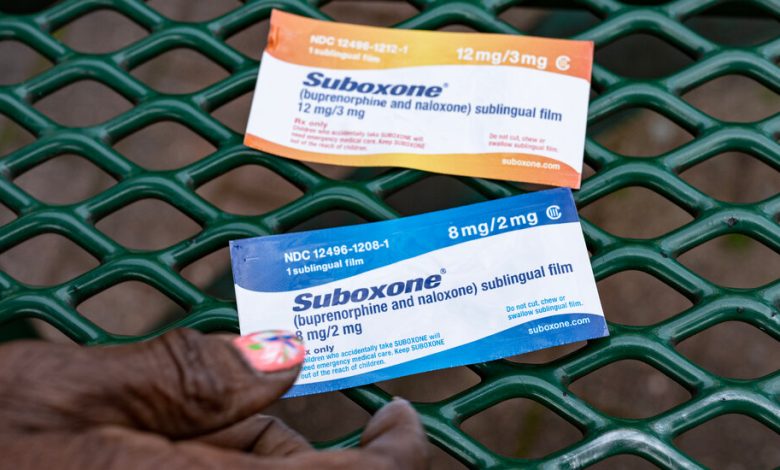A Third of Medicaid Recipients With Opioid Use Disorder Aren’t Getting Medication to Treat It

More than half a million Medicaid recipients diagnosed with opioid use disorder did not receive medication to treat it in 2021, according to a new report released Friday by the inspector general of the Department of Health and Human Services.
The report, which examined the use of addiction treatments that almost all Medicaid programs are now required to cover, also found major disparities in medication rates across states, ages and racial groups. It said the Centers for Medicare & Medicaid Services, an agency of the Health and Human Services Department, should work to close the gaps.
“Medicaid is uniquely positioned to achieve these goals given that the program is estimated to cover almost 40 percent of nonelderly adults with opioid use disorder,” the report said.
The half-million people who did not receive treatment amounted to about one-third of all Medicaid recipients with opioid use disorder. The authors of the report expressed concern that, when a five-year mandatory coverage period issued by the federal government ends in September 2025, some states could again start restricting access.
Dr. Bradley Stein, the director of the RAND Opioid Policy Center and a senior physician policy researcher at the RAND Corporation, who was not involved in the report, said he had expected even lower overall treatment rates. Still, he said, for certain groups, “things are not where they need to be, and I’m asking: Are the successes things we’re going to be able to sustain or not?”
More than 80,000 people died from opioid overdoses in 2021 — about 17 percent more than the prior year. Research shows that medications including methadone, buprenorphine and naltrexone are effective in blunting cravings, and can help prevent deaths.
But people seeking medication treatment often struggle to find providers willing to prescribe the medications — and they often face stigma surrounding their use. Some patients might also be unaware that they can obtain treatment under Medicaid, since state Medicaid programs were not required to cover the treatments until October 2020.
Investigators used enrollment, eligibility and claim datato understand the extent to which people with opioid use disorder received medication.
The rate of medication uptake varied widely across states, from less than 40 percent of Medicaid patients with the disorder in Illinois and Mississippi to almost 90 percent in Rhode Island and Vermont. Medicaid expansion in some states most likely plays a role, said Dr. Stein, as well as “tremendous variation” in state policies around the provision of medication, such as reimbursement for telehealth expenses and the ability of nurse practitioners and physician assistants to independently prescribe.
In 10 states, including New York and Texas, more than half of Medicaid enrollees with opioid use disorder did not receive any medication — enough people to account for a quarter of all Medicaid patients with the disorder across the country.
Only 15 states kept comprehensive data on participants’ race and ethnicity. But among them, officials found that more than 70 percent of white patients with opioid use disorder received medication, compared to about 53 percent of Black patients — a worrisome inequity, they said, considering that overdose deaths have increased more dramatically among Black people.
The young and the old are also at a disadvantage: For Medicaid enrollees under age 19, only about 11 percent of those with the disorder received medication treatment, compared with 70 percent among those 19 to 44. (Research has shown that pediatric treatment programs that involve medication are sparse.) Less than half of Medicaid patients 65 and older with the disorder used the treatment.
The inspector general’s office outlined specific steps for the Centers for Medicare & Medicaid Services to take to encourage states to reduce barriers and reach marginalized groups, including creating a social media campaign and fact sheets to disseminate information.
For Dr. Ayana Jordan, an associate professor of psychiatry at N.Y.U. Grossman School of Medicine, who studies race and addiction, the recommendations were “infuriating” because they failed to include policy moves, like giving incentives to health care providers to work in settings that have few prescribers, partnering with churches and other community organizations, or dealing with medication shortages in pharmacies that serve communities of color.
“They ‘encourage, encourage, encourage’ action — what does that mean? Nothing. It is not enough,” she said. “How can the federal government be involved in actually holding states accountable?”
Dr. Jordan, who treats mostly Medicaid patients in marginalized groups, said she “is tired of seeing so many of them die.”
“I’m over it,” she said. “There is intense sorrow in trying to address a crisis when you are very much handicapped by a lack of legislation.”





